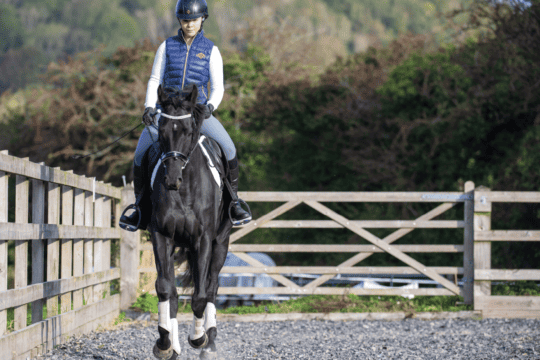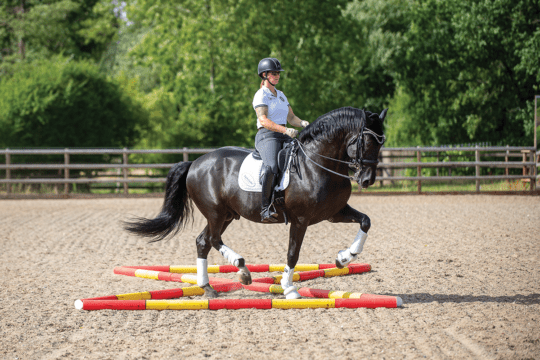Featured Professional

Sandy Phillips
Sandy is an FEI judge for eventing and dressage, and trains horses and riders of all levels.
In the final part of our series, dressage rider and judge Sandy Phillips shows you how to get the best out of your horse using her ‘secret weapon’ exercise
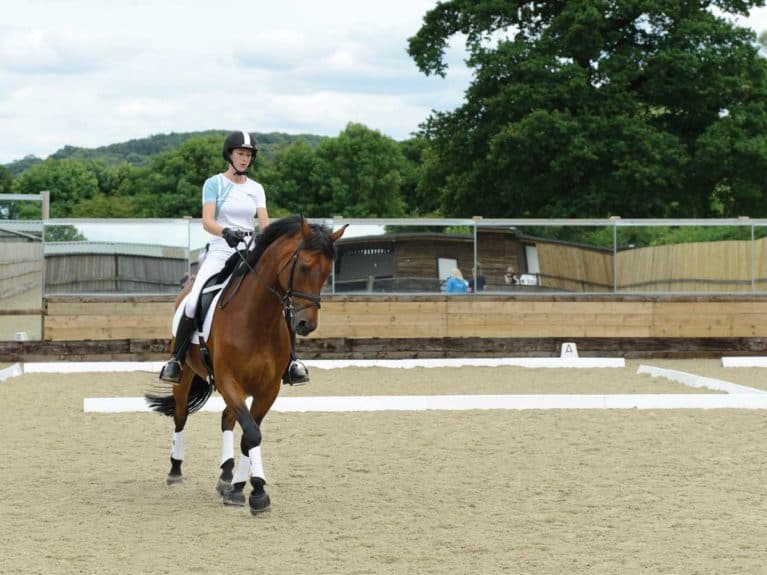
Dressage isn’t a sport that’s known for its quick fixes. It adheres to a training scale, with each progression another building block that will facilitate the next lesson. If you’ve done your homework and developed the foundation correctly, however, you may occasionally stumble upon an exercise that helps you put the pieces of the puzzle together and get the best work out of your horse. This month, I’m going to show you one such exercise, which is easy to set up and simple to understand, but deceptively tricky to execute well. Take the time to master it, though, and it will encourage suppleness and engagement, increase control, and set your horse up for lengthening and lateral movements.
Core curriculum
Over the past few months, you’ve worked on identifying the mechanics of your horse underneath you, developing engagement, improving your transitions and mastering accurate shapes. To get the most out of this exercise, you should be able to…
- half-halt using only your seat
- transition within and between gaits without changing your contact
- identify and accurately ride exactly the line or shape that you need
Exercise – Corners
How to set it up
Place a pole on the ground on the centre line, then another forming a corner back to the long side. This will create a 10 metre square with a way out by A or C on the short side and a way out along the track on the long side.
How to ride it
Start in walk in the square. Halt before a corner, then walk through it, riding as deep as possible into it and doing an angled turn. Don’t allow your horse to round off the turn. Repeat this at every corner of the square. Then trot along the side of the square, bringing your horse back to walk before the corner, walk through the corner, then trot out of it. Again, repeat at each corner of the square. Sound simple? It’ll take a month of practise to be able to do it well.
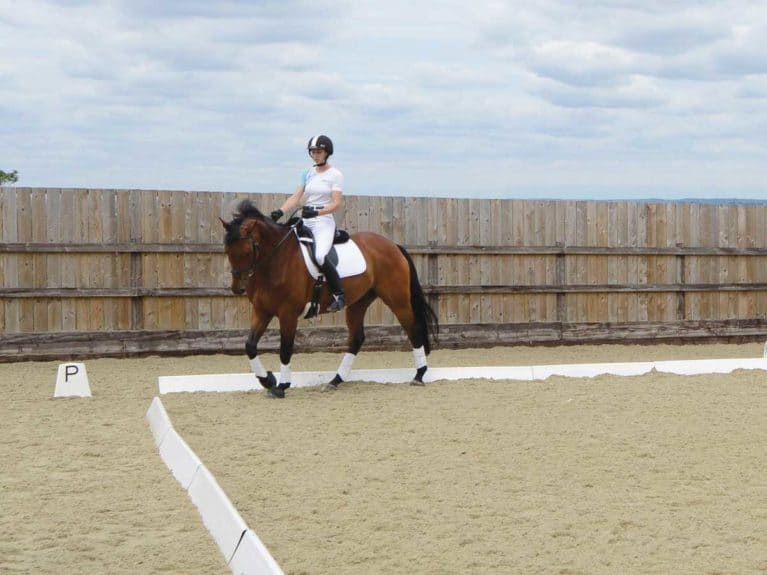
What it does
You’ll start to feel the positive effects of this exercise from the beginning of your session. It’s great for balancing and will help you to engage your horse, which will encourage self-carriage and sensitivity to your aids. It’ll also help you feel and ride every movement, as you’ll have to economise your horse’s strides in such a small space. Working in the square will also set your horse up to tackle trickier concepts, such as lengthening and lateral work.
Top tip – Remember to ride transitions and half-halts within the square the same way as you’ve been practising – use the motion of your hips to control your horse’s speed, rather than relying on your reins.
Problem solving: Falling in
Because this exercise requires so much control, you must make sure your horse doesn’t waste any space by cutting the corners. They should be ridden as 90° angles rather than rounded off. Use your outside rein to keep him in the corner and ride him right up to the pole, then ask him to turn. On the sides of the square that are formed by the fence or wall of your school, you can let him take responsibility for turning when he gets there.
Lengthening
Working in all three gaits in the square develops an amazing amount of strength in your horse, which can then be channelled into creating lengthened paces. Develop the trot in the square by working on the trot–walk–trot variation of the exercise, then come out of the square onto the long side and use the power you’ve built up to encourage your horse to lengthen and push from behind. Use your seat to add spring to his stride and push your hands forward very slightly to give him the freedom to move his front end out. You’re teaching him to take the weight behind and spring off of his hindquarters. Come back to the square after the lengthening and repeat the trot–walk–trot exercise.
In and out
Once you’re comfortable with riding within the square and with entering and exiting it, you can start to use it to set up your lateral movements. Trot through the corner on the long side, thinking about short, energetic steps – you want your horse to come right back to you without having to pull back. Minimise the motion of your seat to encourage him to collect, but keep your leg active so he doesn’t lose engagement. Then you can ask him for shoulder-in, half-pass or travers, because the square has helped create enough suppleness and engagement to be able to execute these movements.
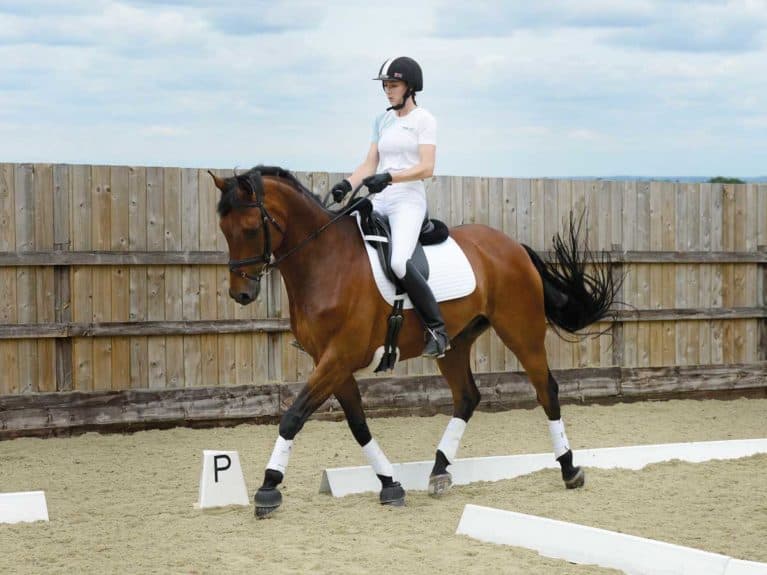
Problem solving: Losing engagement
Over-driving with your seat or tightening through your body will cause your horse to hollow and lose the power from behind. To fix this, you need to get his hindleg underneath him again. Ride a transition to walk and concentrate on feeling his legs underneath you. Make adjustments to the length of his walk stride so that you’re able to ride his hindquarters again. Then reapproach the exercise you were working on, allowing him to work over his topline. Relax – if it all goes wrong, you can always start again.




